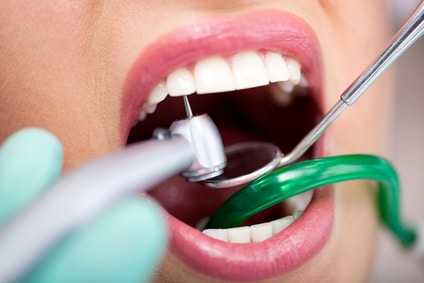What is a Periodontist?
A simple definition and list of reasons why you need a periodontist

We specialize in treating not just your teeth, but your gums and entire mouth with our periodontics expertise.
A Periodontist deals with the diagnosis, treatment and prevention of diseases in the tissues surrounding the teeth. To preserve your teeth, it is important to ensure the surrounding tissues are healthy. Periodontal therapy may eliminate teeth and gum problems.[1]
A periodontist is a doctor who deals with the bone tissue and other areas surrounding the teeth. They treat gum disease and works to prevent tooth loss. If you are referred to a periodontist, you’ll likely have X-rays taken to help determine the underlying problems in your teeth and gums.
When to See a Periodontist
Schedule an appointment immediately if you experience signs such as:
- Unexplained bleeding while brushing, flossing or eating.
- Recession of your gums, which results in longer-looking teeth.
- The presence of gangrene on your gums. Gangrene can be hard to self-diagnose, but it is important to see a periodontist if you are concerned about your symptoms. They can help determine if there are traces of gangrene in your alveolar bone, soft tissues and periodontal ligament.[3]
10 Signs You Need to See a Periodontist
- Your gums are bleeding, swollen or red after flossing or brushing. This may indicate the presence of harmful bacteria on your gums.
- You notice a shift in the alignment of your teeth, or your teeth feel loose or shaky.
- You maintain a good oral hygiene routine but still have continuous bad or sour breath. This may be caused by a buildup of harmful bacteria in your gums that releases toxins.
- You experience pain while eating. Bacteria can cause pain and infection in the roots of your teeth, and the pressure associated with eating causes pain in the gums and surrounding areas.
- You notice a difference in your biting pattern. This can be caused by loose teeth resulting from infection.
- You regularly smoke. Smoking affects blood circulation around the gums and the teeth, hindering the flow of necessary nutrients and oxygen. This causes the cells around your teeth and gums to be unable to fight off infections.
- Your teeth become sensitive to temperature changes. Periodontitis causes your gums to recede and expose the roots of your teeth, making them more sensitive to temperature.
- You have diabetes. Bacteria that cause gum disease live off sugar, and people with diabetes have higher levels of sugar in their saliva. In addition, diabetes may affect blood circulation to the teeth, gums and surrounding tissues.
- There is a history of gum disease in your family. Some of the factors responsible for gum disease may be genetic.
- You have never visited a periodontist for an evaluation. According to the Center for Disease Control, many adults over the age of 30 have gum disease.[4]
References:
- [1] http://www.aapd.org/media/policies_guidelines/e_periotherapy.pdf
- [2] http://www.nidcr.nih.gov/oralhealth/Topics/GumDiseases/PeriodontalGumDisease.htm
- [3] https://www.tmsgdental.com/procedures/periodontics/when-to-see-a-periodontist/
- [4] https://www.niddk.nih.gov/health-information/diabetes/overview/what-is-diabetes
